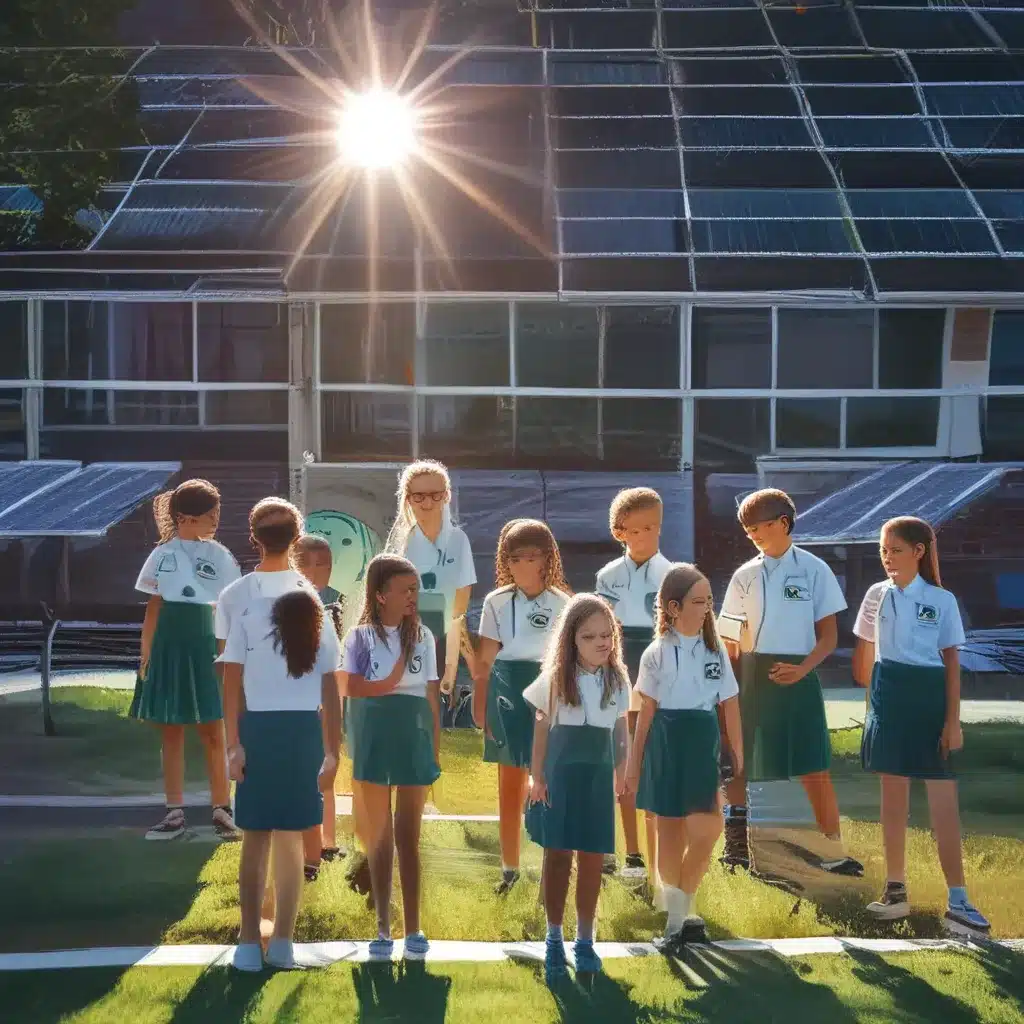
Lighting the Way to a Brighter Future
When I was a kid, the idea of solar energy in schools was about as common as flying cars. Sure, we’d learn about it in science class, but it always felt like some futuristic concept, something that was years, if not decades, away from becoming a reality. Fast forward to today, and that future is now.
According to the Interstate Renewable Energy Council (IREC), there are now over 7,300 schools across the country with solar installations. These schools aren’t just saving money on their electric bills – they’re also educating the next generation about the power of clean energy. It’s a win-win situation that’s not only transforming the way our kids learn but also paving the way for a more sustainable future.
The Rise of Solar Schools
The shift towards solar-powered schools didn’t happen overnight. As the article on Green.org points out, the history of solar energy dates back to ancient times, with the use of magnifying glasses to concentrate the sun’s rays for fire-starting. But it wasn’t until the 1950s that the invention of solar panels really started to pave the way for practical applications of this renewable energy source.
As the cost of solar panels has dramatically declined in recent years, combined with the introduction of new financing options, solar energy has become widely accessible, creating tremendous untapped potential among the majority of our schools still without solar. And schools aren’t just jumping on the solar bandwagon for the cost savings – they’re also recognizing the educational value it can bring to their students.
The Benefits of Solar Education
Integrating solar energy education into schools offers a multitude of benefits, both for the students and the community as a whole. As the article on Green.org explains, it enhances students’ understanding of renewable energy and promotes a sustainable mindset. By engaging in solar energy-related activities, students can develop critical thinking and problem-solving skills that will serve them well in the future.
But the benefits don’t stop there. Solar energy education also opens up potential job opportunities in the growing solar energy industry, inspiring young individuals to pursue careers in renewable energy. Imagine a future where the next generation of engineers, scientists, and policymakers are all passionate about solar power – the possibilities are endless!
A Community Effort
Of course, implementing solar energy education in schools doesn’t happen in a vacuum. Community partnerships play a vital role in promoting these initiatives, allowing for project-based learning and hands-on experiences. By involving local organizations and experts, schools can create a ripple effect, driving wider adoption of solar energy practices within the community.
One such example is the Solar Schools program, which installs solar panels on school rooftops and uses real-time data to engage students in energy monitoring. This not only increases student engagement but also improves their understanding of solar energy and its impact on the environment. It’s a perfect blend of education and practical application, and it’s happening in schools all across the country.
Overcoming Challenges
As with any new initiative, implementing solar energy education in schools isn’t without its challenges. According to the article on Green.org, some of the obstacles include budget constraints, lack of curriculum integration, and limited teacher training. But these challenges aren’t insurmountable, and there are plenty of resources and funding opportunities available to help schools overcome them.
For example, the New York State Energy Research and Development Authority (NYSERDA) offers a range of programs to assist schools in implementing clean energy projects and committing to sustainability-focused principles. From cost-share funding for energy studies to resources for training facility and maintenance staff, NYSERDA is committed to helping schools make the transition to a greener future.
A Brighter Tomorrow
As I look towards the future, I can’t help but feel excited about the role that solar energy education is playing in shaping the next generation. With advancements in technology, such as more efficient solar panels and energy storage systems, solar energy is becoming more accessible and cost-effective, making it an increasingly viable option for schools.
But it’s not just about the technology – it’s about the mindset shift that’s happening within our schools and our communities. As curriculum development continues to evolve, integrating solar energy education across various subjects and grade levels, we’re nurturing a generation of future leaders who are passionate about sustainability and innovation. And that, my friends, is a future I can’t wait to be a part of.
So, if you’re wondering what the future holds, just take a look at the solar-powered schools of today. They’re not just saving money and reducing their carbon footprint – they’re lighting the way to a brighter tomorrow. And who knows, maybe one day, those flying cars will become a reality too. But for now, I’ll settle for a world powered by the sun.


